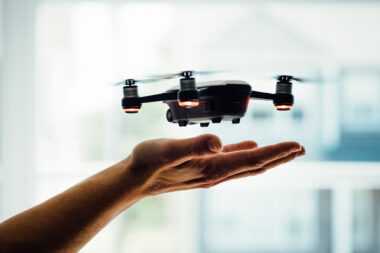Introduction to Additive Manufacturing in Aerospace
The aerospace industry, known for its stringent requirements and complex componentry, has always been at the forefront of technological innovation. In recent years, a significant shift has been observed with the advent of additive manufacturing (AM), also known as 3D printing. This technology has evolved from its initial role in rapid prototyping to a viable option for end use part production in aerospace applications.
Additive manufacturing involves the layer by layer construction of parts, allowing for the creation of complex geometries that are either impossible or too costly to achieve through traditional manufacturing methods. The introduction of AM in aerospace signifies a radical rethinking of design principles, supply chain models, and production techniques.
This shift is not without its challenges. The aerospace sector demands materials and products that meet exceptionally high standards of strength, durability, and reliability. Ensuring these qualities in additively manufactured parts, along with navigating the intricate landscape of aerospace certification and regulation, poses a unique set of challenges.
However, the potential benefits are vast. Additive manufacturing promises substantial weight savings a critical factor in aerospace design through the optimization of part geometries and the use of lightweight materials. The technology also offers a path towards more sustainable manufacturing practices, with less material waste and the possibility of localized production, reducing the carbon footprint associated with logistics and transportation.
Key Technologies and Materials in Additive Manufacturing for Aerospace
1. Key Technologies in AM for Aerospace
Selective Laser Sintering (SLS) and Selective Laser Melting (SLM):
- Both SLS and SLM use lasers to fuse powdered material, layer by layer, to create a solid structure.
- SLS is used with various materials, including polymers and metals, while SLM is primarily used for metals.
- SLM is particularly beneficial for creating complex, high strength metallic components.
Fused Deposition Modelling (FDM):
- FDM works by extruding thermoplastic polymers, layer by layer, to build parts.
- It’s widely used for prototyping and producing non critical components in aerospace due to its cost effectiveness and speed.
Electron Beam Melting (EBM):
- EBM uses a high power electron beam to melt metal powder, layer by layer.
- This technology is known for producing parts with excellent material properties, making it suitable for critical aerospace components.
Direct Metal Laser Sintering (DMLS):
- Similar to SLM, DMLS also uses a laser to fuse metal powder but can work with a wider range of alloys.
- It’s particularly effective for creating small, complex geometries with high precision.
Stereolithography (SLA):
- SLA uses a laser to cure liquid resin into solid plastic.
- It’s mainly used for high precision prototyping due to its excellent surface finish and detail resolution.
2. Materials in AM for Aerospace
Titanium alloys (e.g., Ti6Al4V):
- Titanium alloys are favoured for their high strength to weight ratio and corrosion resistance.
- Ideal for critical components like engine parts and structural components.
Aluminium alloys (e.g., AlSi10Mg):
- Aluminium alloys are used for their lightweight properties and good thermal properties.
- Suitable for non critical structural parts such as brackets and housings.
Nickel Based Super Alloys (e.g., Inconel 718):
- These alloys are known for their high temperature resistance and strength.
- Commonly used in engine components and other high stress environments.
High Performance Thermoplastics (e.g., ULTEM, PEEK):
- Offer high strength and resistance to chemicals and high temperatures.
- Used in interior components and non structural parts due to their lighter weight.
Composites and Advanced Polymers:
- Composite materials are being developed specifically for AM processes.
- They combine the strength of traditional composites with the design flexibility of AM.
Additive Manufacturing Process for Prototype and Component Production
- 3D Modelling:
- The first step in AM is creating a 3D model of the desired part using computer aided design (CAD) software. This digital model serves as the blueprint for the printing process.
- Material Selection:
- Depending on the specific AM technology and the intended use of the part, an appropriate material is selected. Options include plastics, metals, ceramics, and composites.
- Layering Process:
- AM involves adding material in layers to create the part. This process begins with the AM machine distributing a thin layer of powder material onto the build platform.
- According to the CAD model, a heat source (laser or electron beam) selectively fuses this powder into the shape of the first crosssection of the part.
- Once the first layer is fused, the build platform lowers slightly, and a new layer of powder is applied on top.
- The process is repeated, with each layer fusing to the one below it, until the part is complete.
- Techniques:
- Selective Laser Sintering (SLS) and Selective Laser Melting (SLM): These processes use a laser to sinter or melt the material powder. SLS is typically used for polymers, while SLM is used for metals.
- Fused Deposition Modelling (FDM) involves the extrusion of thermoplastic materials through a heated nozzle, layer by layer.
- Stereolithography (SLA) uses a laser to cure liquid resin into solid plastic, building up the parts layer by layer.
- Post-Processing:
- After printing, parts often require post processing. This can include removing support structures (used to support overhanging features during printing), surface smoothing, heat treatments (for stress relief), and machining for precision features.
- Quality Control:
- The finished part is inspected for quality. This can involve visual inspections, dimensional checks, and, in some cases, more sophisticated methods like CT scanning.
Algorithm Used
In additive manufacturing (AM), various algorithms play critical roles in the process, from the initial design phase to the actual printing and quality control. These algorithms are integral to transforming a digital model into a physical object and ensuring that the object meets the desired specifications.
1. Slicing algorithms
- Function: Converts a 3D model into a series of thin layers, or “slices,” which the printer will then create sequentially.
- Process: The algorithm takes the 3D CAD model and slices it horizontally into layers of a specified thickness. For each layer, it generates a path that the printer will follow to deposit or fuse the material.
- Example: In Fused Deposition Modelling (FDM), the slicing algorithm determines the path the extrusion head will follow, the speed of extrusion, and settings like infill density and pattern.
2. Path Generation Algorithms
- Function: Generates the toolpath that the printer’s nozzle or laser will follow to create each layer.
- Process: These algorithms calculate the most efficient route for the printer’s head to follow, ensuring that every part of each layer is correctly formed without wasting time or material.
- Example: In selective laser sintering (SLS) or melting (SLM), path generation algorithms determine the laser’s path over the powder bed to fuse the material according to the cross sectional shape of the part.
3. Support generation algorithms
- Function: Used in processes where support structures are needed, these algorithms determine where and how to build these supports.
- Process: They analyse the geometry of the part to identify overhangs and other areas that cannot be printed without support. The algorithm then generates a structure that will support the part during printing but can be easily removed afterward.
- Example: In stereolithography (SLA), where parts are built upside down, supports are often necessary to anchor the part to the build platform and support overhanging features.
4. Topology Optimization Algorithms
- Function: Used in the design phase to optimize the material distribution within the part based on load-bearing requirements.
- Process: These algorithms iteratively remove material from areas of low stress while maintaining material in areas of high stress, resulting in a design that is both lightweight and strong.
- Example: Common in the aerospace and automotive industries, where reducing the weight of parts is crucial without compromising their structural integrity.
5. Quality Control Algorithms
- Function: Used to ensure that the printed part meets quality standards.
- Process: These algorithms analyse data from various sensors to detect anomalies in the printing process. They can make real-time adjustments or flag parts for inspection.
- Example: In high precision industries, these algorithms might use data from in process monitoring systems to detect defects like cracks or deformations.
Advantages of AM for Prototyping and Component Production
- Complex Geometries: AM can produce parts with complex internal structures that are not possible with traditional subtractive methods.
- Reduced Material Waste: Unlike subtractive manufacturing, which removes material, AM adds material only where needed.
- Rapid Prototyping: AM’s ability to quickly produce parts from a digital model significantly speeds up the prototyping process.
- Customization: Each part can be easily modified and customized without the need for new tools or Molds.
- Lightweight and Strong Parts: Particularly in aerospace, AM allows for the production of parts that are both lighter and stronger, contributing to improved fuel efficiency.
Conclusion
Additive manufacturing revolutionizes both prototyping and production by offering flexibility, efficiency, and the ability to create complex geometries with minimal waste. Its contrast with traditional subtractive manufacturing lies in its layer by layer approach, opening new possibilities in design and manufacturing across various industries, especially in aerospace, where these benefits are critically valuable.



